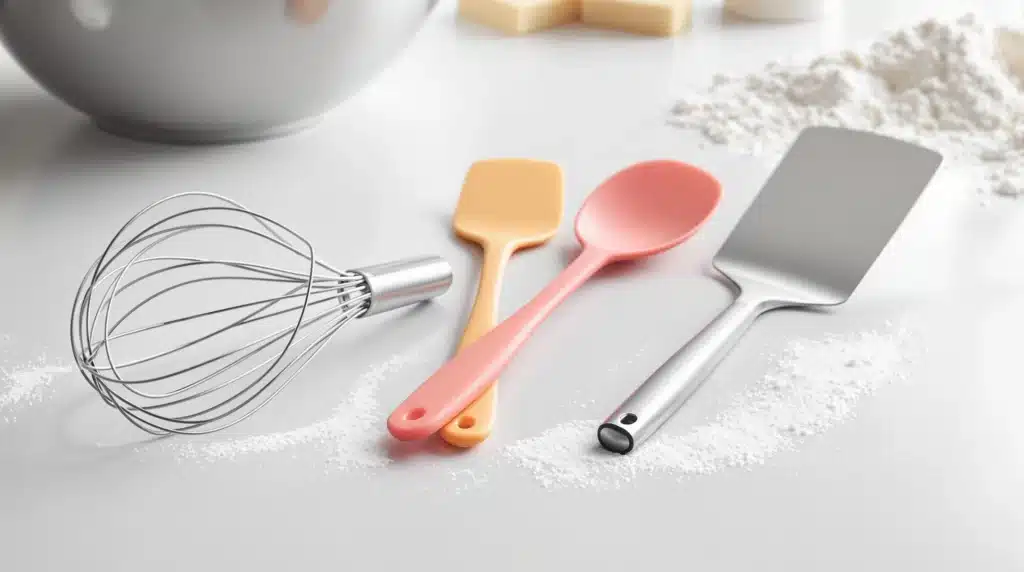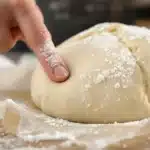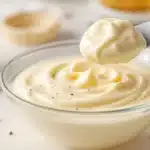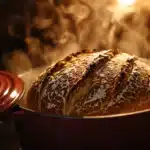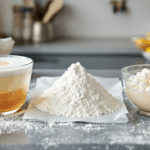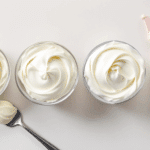When equipping a kitchen for baking, it’s easy to get fixated on the big-ticket items: the stand mixer gleaming on the counter, the perfectly calibrated oven, the essential set of bakeware. But often, the true unsung heroes, the tools that make the biggest difference in our day-to-day baking efficiency and success, are the small, humble hand tools we reach for constantly. We’re talking about whisks, spatulas, and scrapers.
To a beginner, one whisk might seem much like another, any spoon might suffice for stirring, and the purpose of a scraper might seem obscure. However, experienced bakers know that having the right type of these small tools, and using them correctly, can dramatically improve how easily you execute techniques, how thoroughly you incorporate ingredients, and ultimately, how well your final product turns out. Don’t underestimate their importance! Let’s shine a spotlight on these essential small tools and explore why they truly have a big impact on your baking.
The Whisk: More Than Just Stirring
A whisk is designed for much more than simply stirring liquids together. Its wire construction is engineered to blend ingredients smoothly while often incorporating air.
- Core Functions: Blending wet ingredients (eggs, milk, oil), smoothing out lumps in batters and sauces, thoroughly combining and aerating dry ingredients (flour, leaveners, salt), and, crucially, incorporating air to create volume (whipping egg whites or cream).
- Why the Right Whisk Matters: Different whisk designs excel at different tasks:
- Balloon Whisk: This is the classic shape with a large, rounded head and numerous thin, flexible wires. Its broad shape is ideal for maximizing contact with the mixture and incorporating the most air. Perfect for whipping large volumes of egg whites for meringue or heavy cream into whipped cream. Also good for whisking light batters.
- French Whisk: Features a narrower, more elongated profile with slightly fewer, often stiffer wires compared to a balloon whisk. This design makes it better for working with thicker sauces, custards, and batters, especially in smaller bowls or saucepans where it can reach into the corners more effectively. Many consider it a great all-around whisk.
- Flat Whisk (or Roux Whisk): The wires are arranged in a relatively flat loop. This shape is excellent for use in shallow pans (like skillets) for making pan sauces, gravies, or roux, as the flat bottom maintains better contact with the pan’s surface to prevent scorching and incorporate ingredients smoothly.
- Mini Whisk: Simply a scaled-down version, perfect for small tasks like whisking a single egg, making a small amount of vinaigrette, or blending ingredients in a measuring cup.
- Key Baking Uses: Achieving lofty meringue peaks, creating stable whipped cream, evenly distributing leaveners and salt throughout flour mixtures (a quick alternative to sifting), ensuring lump-free pastry cream or sauces, emulsifying liquids.
- Choosing & Using Tips: For a basic toolkit, invest in at least one sturdy, medium-sized balloon or French whisk made of stainless steel for durability. Ensure the wires feel securely attached to the handle. Use a whisk large enough for the bowl you are working in to maximize efficiency, especially when whipping.
The Spatula: Your Bowl-Scraping, Folding Friend
When we talk about spatulas in baking, we primarily mean the flexible-headed type (often silicone or rubber), not the metal ones used for flipping burgers or lifting cookies (those are often called turners or offset spatulas, respectively). This flexible spatula is one of the most versatile and indispensable tools in baking.
- Core Functions: Gently mixing ingredients (especially when minimizing gluten development is key), folding light mixtures into heavier ones without deflation, scraping bowls and jars completely clean, spreading batters or frostings (though offset spatulas excel at frosting).
- Why the Right Spatula Matters: The material, flexibility, and shape of the head determine how well it performs its tasks.
- Silicone Spatulas: The modern standard and highly recommended. They are heat-resistant, meaning you can use them for stirring hot custards or scraping hot pans without melting. They are flexible enough to conform to the curve of a bowl for efficient scraping, yet sturdy enough for mixing. They are non-reactive, easy to clean (often dishwasher-safe), and won’t scratch non-stick surfaces. They come in various shapes, including the classic flat head and the useful “spoonula” (a hybrid with a shallow spoon shape).
- Rubber Spatulas: The older style. Often less heat-resistant than silicone (can melt or warp with high heat) and can sometimes degrade, crack, or retain strong odors or stains over time. Silicone is generally a superior choice for baking today.
- Key Baking Uses:
- Folding: The essential tool for the gentle folding technique required to incorporate whipped egg whites or cream into batters (like for chiffon cakes, mousses, soufflés) without knocking out the air. Also used for gently folding in delicate ingredients like berries or chocolate chips.
- Scraping Bowls Clean: This isn’t just about tidiness; it’s about accuracy. Scraping down the sides and bottom of the bowl ensures that all your carefully measured ingredients (especially clinging fats like butter) are incorporated into the batter or dough, maintaining the recipe’s intended ratios. A flexible spatula does this far better than a spoon.
- Gentle Mixing/Stirring: Ideal for combining ingredients when you specifically want to avoid overmixing, like finishing a cake batter after adding flour or stirring together muffin batter until just moistened.
- Spreading: Useful for spreading thick batters evenly in baking pans.
- Cooking: Heat-resistant silicone spatulas are excellent multi-taskers for stovetop cooking too.
- Choosing & Using Tips: Invest in at least two good-quality silicone spatulas, perhaps one standard size and one smaller one or a spoonula. Check the temperature rating to ensure they are adequately heat-resistant for your needs. Look for spatulas where the head is either molded as one piece with the handle or very securely attached, as two-piece designs can sometimes trap food or break.
The Scraper: Taming Dough and Surfaces
Often overlooked by beginners, scrapers are simple tools that make handling dough and managing your workspace significantly easier, especially for bread bakers.
- Core Functions: Manipulating sticky dough, dividing dough portions, cleaning work surfaces efficiently, and sometimes scraping bowls.
- Why the Right Scraper Matters: Different shapes and materials are suited for different scraping tasks.
- Types:
- Bench Scraper (also called Dough Scraper or Pastry Scraper): This typically features a wide, flat, rectangular blade (usually sturdy stainless steel, but sometimes firm plastic) with a comfortable handle along the top edge. It’s a baker’s workhorse.
- Bowl Scraper: Usually a piece of semi-flexible plastic with one straight edge and one curved edge, designed to mimic the curve of a mixing bowl.
- Key Baking Uses:
- Bench Scraper:
- Dough Handling: Invaluable for lifting, turning, folding, and manipulating sticky bread dough during kneading or shaping without needing to add excess flour (which makes bread dense). Its flat edge cleanly lifts dough from the work surface.
- Dividing Dough: Provides clean, precise cuts when portioning dough for rolls, baguettes, or multiple loaves. Much better than tearing or using a dull knife.
- Cleaning Work Surfaces: Makes quick work of scraping up stuck-on bits of dough and excess flour from your countertop or pastry board. Keeps your workspace tidy.
- Transferring Ingredients: Can be used like a wide scoop to transfer chopped nuts, chocolate chips, or other small items.
- Bowl Scraper:
- Efficient Bowl Scraping: The flexible curved edge perfectly conforms to the shape of mixing bowls, allowing you to scrape out every last bit of thick batter or sticky dough far more effectively than a spatula can alone. Ensures ingredient accuracy and minimizes waste.
- Gentle Mixing/Folding: Can also be used within the bowl for some gentle folding or mixing actions, especially with doughs.
- Lifting Dough: Helps cleanly lift sticky dough masses out of the bowl onto the work surface.
- Bench Scraper:
- Choosing & Using Tips: A metal bench scraper is highly recommended for its durability, sharp edge (for cutting), and effectiveness on work surfaces. A flexible plastic bowl scraper is inexpensive and incredibly useful for bowl work. Many bakers find having both is ideal, particularly if they bake bread frequently.
Small Tools, Big Difference: Efficiency and Precision
It’s easy to see how these seemingly minor tools contribute significantly to a smoother, more successful baking process:
- Accuracy & Consistency: Proper spatulas and bowl scrapers ensure all ingredients are incorporated, preserving recipe ratios.
- Better Technique Execution: Folding is only truly effective with the right flexible spatula. Whisking achieves proper aeration with the right whisk shape. Handling sticky dough is manageable with a bench scraper.
- Efficiency & Less Frustration: These tools speed up tasks like combining ingredients, cleaning bowls, and managing dough, making the whole process less frustrating.
- Reduced Waste: Scraping bowls effectively means less batter or dough down the drain.
- Improved Results: By enabling better technique and accuracy, these tools directly contribute to lighter textures, more evenly mixed batters, and better-handled doughs.
Conclusion: The Power in Simplicity
While the spotlight often falls on larger, more expensive baking equipment, don’t underestimate the collective power of essential small hand tools. A good whisk isn’t just for stirring; it’s for aerating and emulsifying. A flexible silicone spatula isn’t just for mixing; it’s crucial for gentle folding and ensuring accuracy by scraping bowls clean. And for anyone working with dough, a bench scraper and bowl scraper quickly become indispensable allies for handling, dividing, and cleaning.
When building your baker’s toolkit, pay attention to these foundational items. Investing in a few decent quality whisks, heatproof silicone spatulas, and sturdy scrapers will pay dividends in making your baking process more efficient, less frustrating, and ultimately more successful. They may be small, but their impact on your baking is undeniably big.

